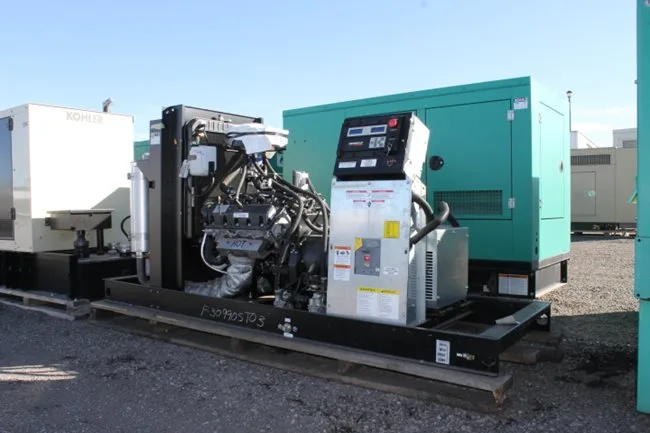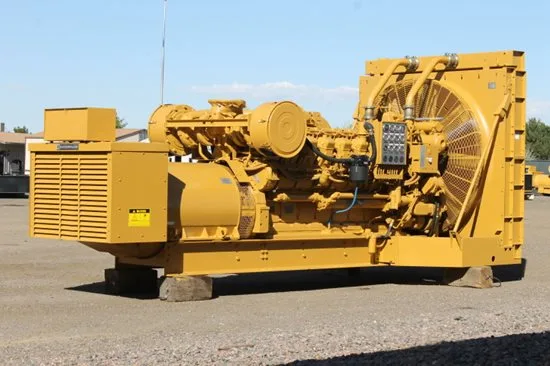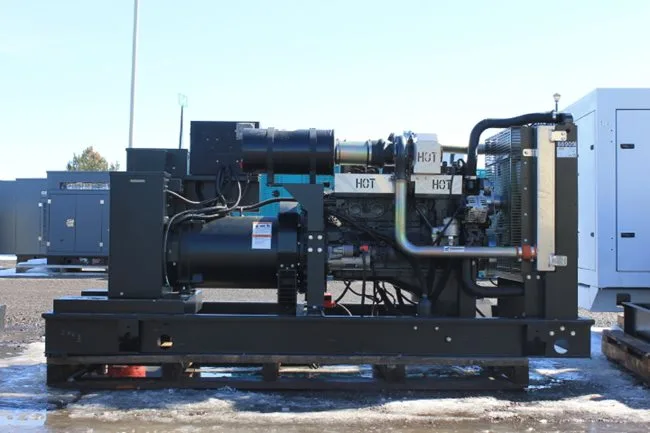Single-Phase Generators
In a single-phase generator, the stator has a number of windings connected in series to form a single circuit across which the output voltage is generated.
Equal Voltage Across All Stator Windings
For instance, in a 4-pole generator, the four poles of the rotor are evenly spaced around the frame of the stator. At any given point in time, each rotor pole is in the same position relative to the stator windings as any other rotor pole. Hence, the voltages induced in all the stator windings are of the same value and amplitude and also in phase with each other at every time.
Series Connection of Stator Windings
Also, since the windings are connected in series, the voltages produced in each winding add up to produce a final generator output voltage that is four times the voltage across each of the individual stator windings.
Single-phase power distribution is commonly used in residential areas and also in rural areas where loads are small and uncommon and the cost of setting up a three-phase distribution network is high.

Three-Phase Generators
In a three-phase generator, three single-phase windings are spaced such that there is a phase difference of 120° among the voltages induced in each of the stator windings. The three phases are independent of each other.
Star or Y Configuration
In a star or Y connection, one lead from each winding is connected to form the neutral. The opposite end of each winding, known as the finish end, is connected to a line terminal each. This produces a line voltage greater than the individual voltage across each winding.
Delta Configuration
In a delta configuration, the start end of one phase is connected to the finish end of the adjacent phase. This produces a line voltage equal to the phase voltage. Electrical utilities and commercial generators produce three-phase power.
Phase Conversion in Generators
Reconfiguring Coil Connection
A three-phase generator can be converted to a single-phase one by altering the connection between its stator windings inside or outside the generator head. For instance:
- Connecting the coils in series will convert the generator to a single-phase one.
- By connecting opposite coils in series, you can double the output voltage.
- A parallel connection will double the flow of current.
Mapping the wires emerging from the generator to the coils they are connected to is necessary. Manufacturer’s documents or studying how the generator is wired may be required.
Centre-Tapping Single-Phase Loads to Three-Phase Generators
A three-phase generator can be viewed as a combination of three single-phase units. Single-phase loads can be connected as follows:
- Connect the load between a phase conductor and the system neutral. This is usually done for low-power loads.
- Connect the load across two live conductors in a phase-to-phase connection, typically for high-power loads such as air conditioners or heaters.

Phase Converters
A rotary phase converter (RPC) can be connected to a single-phase generator to produce a three-phase power supply. This setup uses two input connections from a single-phase generator, producing an induced voltage on the third terminal differing in phase by 120°.
Variable Speed Drives (VSDs) / Variable Frequency Drives (VFDs) / Inverters
These function similarly to rotary phase converters and are most effective for applications requiring less than 20 horsepower.

Choosing Between Single-Phase and Three-Phase Generators
The output of single-phase generators is typically limited to 25 kVA. At higher ratings, it is more cost-effective to draw single-phase power supply from a three-phase generator.
Single-phase generators are ideal for single-phase power applications, whereas three-phase generators are suitable for powering appliances requiring multiple phases. Load balances must be considered when stepping up a single-phase generator to a three-phase unit.